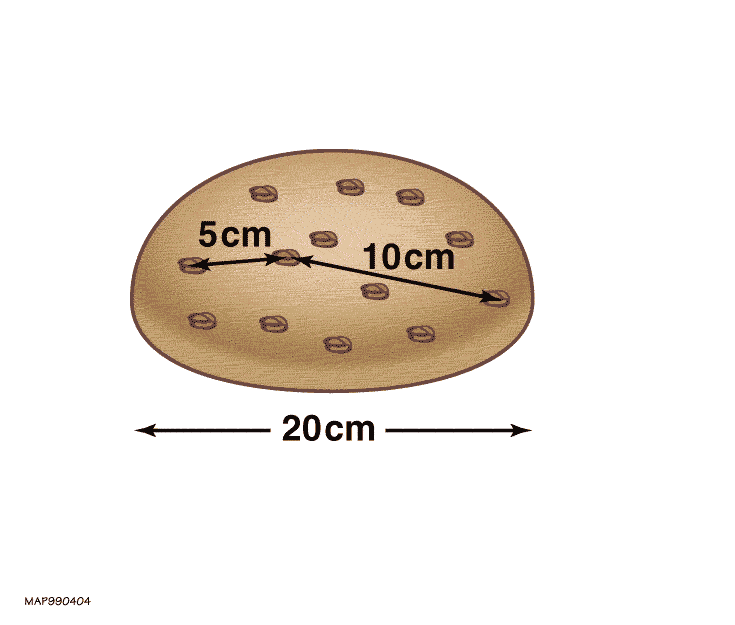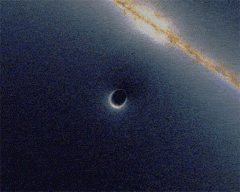|
Cosmic Time
Cosmic time, or cosmological time, is the time coordinate used in the Big Bang models of physical cosmology. This concept of time avoids some issues related to relativity by being defined within a solution to the equations of general relativity widely used in cosmology. Problems with absolute time Albert Einstein's theory of special relativity showed that simultaneity is not absolute. An observer at rest may believe that two events separated in space (say, two lightning strikes 10 meters apart) occurred at the same time, while another observer in (relative) motion claims that one occurred after the other. This coupling of space and time, Minkowski spacetime, complicates scientific time comparisons: neither observer is an obvious candidate for the time reference. Einstein's theory of general relativity in an isotropic, homogeneous expanding universe provides a way to define a unique time reference. All coordinate points in such a universe are equivalent. Hermann Weyl postulated t ... [...More Info...] [...Related Items...] OR: [Wikipedia] [Google] [Baidu] |
Time
Time is the continuous progression of existence that occurs in an apparently irreversible process, irreversible succession from the past, through the present, and into the future. It is a component quantity of various measurements used to sequence events, to compare the duration of events (or the intervals between them), and to quantify rates of change of quantities in material reality or in the qualia, conscious experience. Time is often referred to as a fourth dimension, along with Three-dimensional space, three spatial dimensions. Time is one of the seven fundamental physical quantities in both the International System of Units (SI) and International System of Quantities. The SI base unit of time is the second, which is defined by measuring the electronic transition frequency of caesium atoms. General relativity is the primary framework for understanding how spacetime works. Through advances in both theoretical and experimental investigations of spacetime, it has been shown ... [...More Info...] [...Related Items...] OR: [Wikipedia] [Google] [Baidu] |
Homogeneity (physics)
In physics, a homogeneous material or system has the same properties at every point; it is uniform without irregularities. (accessed November 16, 2009). Tanton, James. "homogeneous." Encyclopedia of Mathematics. New York: Facts On File, Inc., 2005. Science Online. Facts On File, Inc. "A polynomial in several variables p(x,y,z,…) is called homogeneous [...] more generally, a function of several variables f(x,y,z,…) is homogeneous [...] Identifying homogeneous functions can be helpful in solving differential equations [and] any formula that represents the mean of a set of numbers is required to be homogeneous. In physics, the term homogeneous describes a substance or an object whose properties do not vary with position. For example, an object of uniform density is sometimes described as homogeneous." James. homogeneous (math). (accessed: 2009-11-16) A uniform electric field (which has the same strength and the same direction at each point) would be compatible with homogeneity ... [...More Info...] [...Related Items...] OR: [Wikipedia] [Google] [Baidu] |
Friedmann Equation
The Friedmann equations, also known as the Friedmann–Lemaître (FL) equations, are a set of equations in physical cosmology that govern cosmic expansion in homogeneous and isotropic models of the universe within the context of general relativity. They were first derived by Alexander Friedmann in 1922 from Einstein's field equations of gravitation for the Friedmann–Lemaître–Robertson–Walker metric and a perfect fluid with a given mass density and pressure . (English translation: ). The original Russian manuscript of this paper is preserved in thEhrenfest archive The equations for negative spatial curvature were given by Friedmann in 1924. (English translation: ) The physical models built on the Friedmann equations are called FRW or FLRW models and from the ''Standard Model'' of modern cosmology, although such a description is also associated with the further developed Lambda-CDM model. The FLRW model was developed independently by the named authors in the 1920s and 19 ... [...More Info...] [...Related Items...] OR: [Wikipedia] [Google] [Baidu] |
Hubble Constant
Hubble's law, also known as the Hubble–Lemaître law, is the observation in physical cosmology that galaxies are moving away from Earth at speeds proportional to their distance. In other words, the farther a galaxy is from the Earth, the faster it moves away. A galaxy's recessional velocity is typically determined by measuring its redshift, a shift in the frequency of light emitted by the galaxy. The discovery of Hubble's law is attributed to work published by Edwin Hubble in 1929, but the notion of the universe expanding at a calculable rate was first derived from general relativity equations in 1922 by Alexander Friedmann. The Friedmann equations showed the universe might be expanding, and presented the expansion speed if that were the case. Before Hubble, astronomer Carl Wilhelm Wirtz had, in 1922 and 1924, deduced with his own data that galaxies that appeared smaller and dimmer had larger redshifts and thus that more distant galaxies recede faster from the observer. In ... [...More Info...] [...Related Items...] OR: [Wikipedia] [Google] [Baidu] |
Dark Energy
In physical cosmology and astronomy, dark energy is a proposed form of energy that affects the universe on the largest scales. Its primary effect is to drive the accelerating expansion of the universe. It also slows the rate of structure formation. Assuming that the lambda-CDM model of cosmology is correct, dark energy dominates the universe, contributing 68% of the total energy in the present-day observable universe while dark matter and Baryon#Baryonic matter, ordinary (baryonic) matter contribute 27% and 5%, respectively, and other components such as neutrinos and photons are nearly negligible.Sean Carroll, Ph.D., Caltech, 2007, The Teaching Company, ''Dark Matter, Dark Energy: The Dark Side of the Universe'', Guidebook Part 2. p. 46. Retrieved 7 October 2013, "...dark energy: A smooth, persistent component of invisible energy, thought to make up about 70 percent of the energy density of the universe. Dark energy is smooth because it doesn't accumulate preferentially in galaxi ... [...More Info...] [...Related Items...] OR: [Wikipedia] [Google] [Baidu] |
Flat Universe
In physical cosmology, the shape of the universe refers to both its local and global geometry. Local geometry is defined primarily by its curvature, while the global geometry is characterised by its topology (which itself is constrained by curvature). General relativity explains how spatial curvature (local geometry) is constrained by gravity. The global topology of the universe cannot be deduced from measurements of curvature inferred from observations within the family of homogeneous general relativistic models alone, due to the existence of locally indistinguishable spaces with varying global topological characteristics. For example; a multiply connected space like a 3 torus has everywhere zero curvature but is finite in extent, whereas a flat simply connected space is infinite in extent (such as Euclidean space). Current observational evidence ( WMAP, BOOMERanG, and Planck for example) imply that the observable universe is spatially flat to within a 0.4% margin of error o ... [...More Info...] [...Related Items...] OR: [Wikipedia] [Google] [Baidu] |
Redshift
In physics, a redshift is an increase in the wavelength, and corresponding decrease in the frequency and photon energy, of electromagnetic radiation (such as light). The opposite change, a decrease in wavelength and increase in frequency and energy, is known as a #Blueshift, blueshift. The terms derive from the colours red and blue which form the extremes of the Visible spectrum, visible light spectrum. Three forms of redshift occur in astronomy and cosmology: Doppler effect, Doppler redshifts due to the relative motions of radiation sources, gravitational redshift as radiation escapes from gravitational potentials, and cosmological redshifts of all light sources proportional to their distances from Earth, a fact known as Hubble's law that implies the expansion of the universe, universe is expanding. All redshifts can be understood under the umbrella of Frame of reference, frame transformation laws. Gravitational waves, which also travel at Speed of light, the speed of light, a ... [...More Info...] [...Related Items...] OR: [Wikipedia] [Google] [Baidu] |
Age Of The Universe
In physical cosmology, the age of the universe is the cosmological time, time elapsed since the Big Bang: 13.79 billion years. Astronomers have two different approaches to determine the age of the universe. One is based on a particle physics model of the early universe called Lambda-CDM model, Lambda-CDM, matched to measurements of the distant, and thus old features, like the cosmic microwave background. The other is based on the distance and relative velocity of a series or "ladder" of different kinds of stars, making it depend on local measurements late in the history of the universe. These two methods give slightly different values for the Hubble constant, which is then used in a formula to calculate the age. The range of the estimate is also within the range of the estimate for the List of oldest stars, oldest observed star in the universe. History In the 18th century, the concept that the age of Earth was millions, if not billions, of years began to appear. Nonetheless ... [...More Info...] [...Related Items...] OR: [Wikipedia] [Google] [Baidu] |
ΛCDM
The Lambda-CDM, Lambda cold dark matter, or ΛCDM model is a mathematical model of the Big Bang theory with three major components: # a cosmological constant, denoted by lambda (Λ), associated with dark energy; # the postulated cold dark matter, denoted by CDM; # ordinary matter. It is the current ''standard model'' of Big Bang cosmology, as it is the simplest model that provides a reasonably good account of: * the existence and structure of the cosmic microwave background; * the large-scale structure in the distribution of galaxies; * the observed abundances of hydrogen (including deuterium), helium, and lithium; * the accelerating expansion of the universe observed in the light from distant galaxies and supernovae. The model assumes that general relativity is the correct theory of gravity on cosmological scales. It emerged in the late 1990s as a concordance cosmology, after a period when disparate observed properties of the universe appeared mutually inconsistent, an ... [...More Info...] [...Related Items...] OR: [Wikipedia] [Google] [Baidu] |
Cosmological Singularity
A gravitational singularity, spacetime singularity, or simply singularity, is a theoretical condition in which gravity is predicted to be so intense that spacetime itself would break down catastrophically. As such, a singularity is by definition no longer part of the regular spacetime and cannot be determined by "where" or "when”. Gravitational singularities exist at a junction between general relativity and quantum mechanics; therefore, the properties of the singularity cannot be described without an established theory of quantum gravity. Trying to find a complete and precise definition of singularities in the theory of general relativity, the current best theory of gravity, remains a difficult problem. A singularity in general relativity can be defined by the scalar invariant curvature becoming infinite or, better, by a geodesic being incomplete. General relativity predicts that any object collapsing beyond its Schwarzschild radius would form a black hole, inside which a s ... [...More Info...] [...Related Items...] OR: [Wikipedia] [Google] [Baidu] |
Hubble Flow
Hubble's law, also known as the Hubble–Lemaître law, is the observation in physical cosmology that galaxies are moving away from Earth at speeds proportional to their distance. In other words, the farther a galaxy is from the Earth, the faster it moves away. A galaxy's recessional velocity is typically determined by measuring its redshift, a shift in the frequency of light emitted by the galaxy. The discovery of Hubble's law is attributed to work published by Edwin Hubble in 1929, but the notion of the universe expanding at a calculable rate was first derived from general relativity equations in 1922 by Alexander Friedmann. The Friedmann equations showed the universe might be expanding, and presented the expansion speed if that were the case. Before Hubble, astronomer Carl Wilhelm Wirtz had, in 1922 and 1924, deduced with his own data that galaxies that appeared smaller and dimmer had larger redshifts and thus that more distant galaxies recede faster from the observer. In 19 ... [...More Info...] [...Related Items...] OR: [Wikipedia] [Google] [Baidu] |






